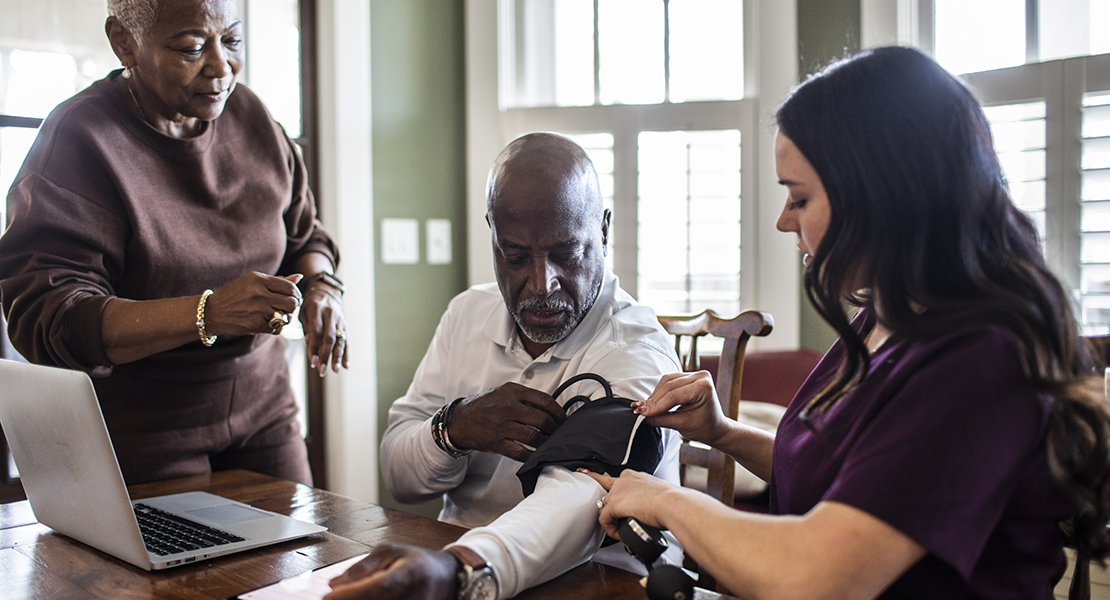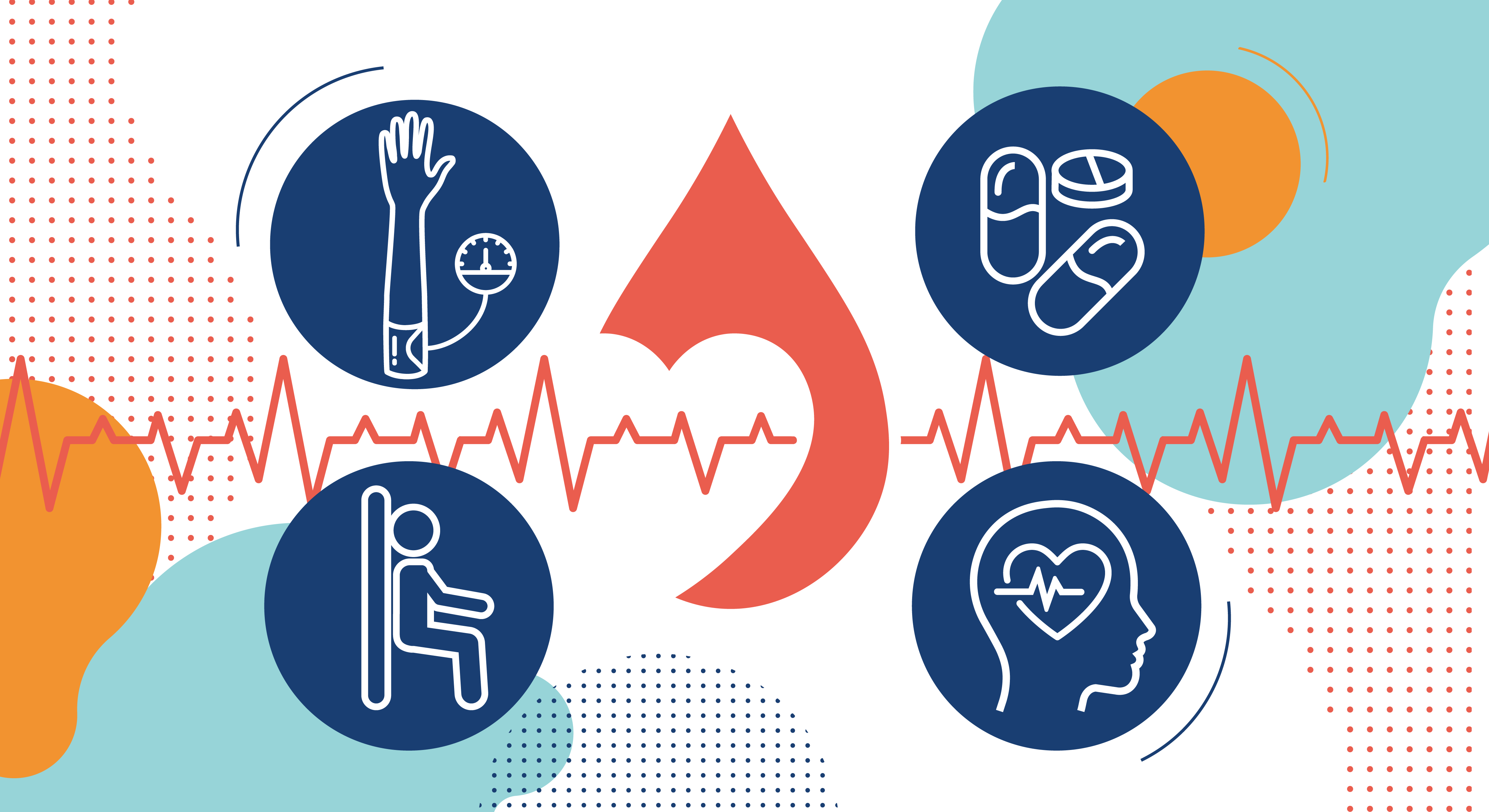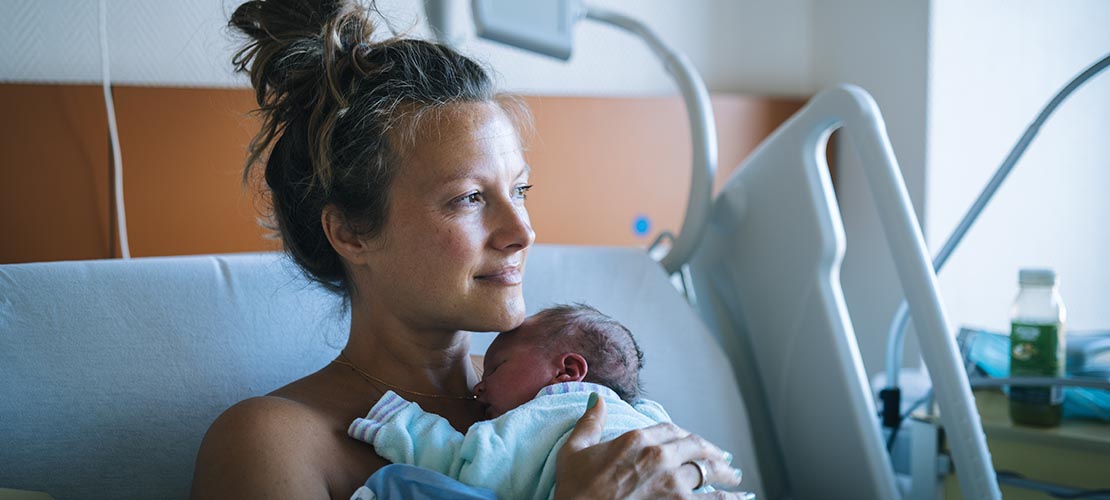High blood pressure is one of the most preventable and treatable causes of premature death worldwide. Also known as hypertension, it causes more than half of all strokes and heart attacks.
The condition is a risk factor for cardiovascular disease, kidney disease and dementia. It is often referred to as the silent killer because it has no symptoms.
Around 1 in 3 adults in the UK have high blood pressure, and half of these are not diagnosed or treated.
NIHR-funded researchers are looking for ways to better diagnose, manage and prevent high blood pressure.
Making risk-based decisions about blood pressure treatment
If someone has high blood pressure, this is usually the signal to begin treatment for cardiovascular disease (CVD). But doctors should also take other risk factors into account before starting treatment.
A team of researchers led by the London School of Hygiene and Tropical Medicine wanted to understand more about these risk factors. They used data from 1 million people to assess their risk of having a cardiovascular event, such as a stroke or heart attack. The research team looked at information like cholesterol, weight, family history of heart disease and blood pressure. This information was combined to create a risk score for each person in the study. - who were observed for four years.
The study found that these risk scores could help decide whether people needed treatment for CVD. The scores were actually better at predicting this than blood pressure readings alone.
These findings add important evidence that could mean more people are given blood pressure treatment earlier. Patients should be aware of their overall risk of CVD, instead of focusing only on their blood pressure levels, say the researchers.
Detecting causes of high blood pressure with a ten-minute scan
In some people, high blood pressure is caused by high levels of a steroid hormone called aldosterone. This retains salt in the body, which drives up blood pressure.
NIHR-funded researchers set out to test whether a new form of CT scan could detect the nodules which sometimes cause high levels of this steroid.
They recruited 128 people with high blood pressure caused by aldosterone. Scans from the study found that in two-thirds of patients, high aldosterone levels were coming from benign nodules - which can be safely removed.
The CT scan was combined with a urine test to look for steroids in the urine. This test was able to find 18 of the 24 patients who achieved a normal blood pressure after they stopped taking their medication.
The results show that this approach can more accurately identify nodules on the bladder which cause high blood pressure, so they can be removed. This means that people with high blood pressure that is difficult to treat could get better care and treatment.

Managing high blood pressure at home
People who control high blood pressure with drugs need to take regular blood pressure readings. This helps doctors decide how much treatment they need on a day-to-day basis. Busy GP surgeries find it a challenge to keep up with regular blood pressure monitoring.
Research has looked at whether personal blood pressure monitors can help people to manage their own blood pressure at home. The addition of a web-based tool shares blood pressure readings and advice between the patient and their doctor. Led by researchers at the University of Oxford, the HOME-BP study involved 622 people with high blood pressure.
After 12 months, the researchers found that patients managed at home had far lower blood pressure than those managed in the clinic. This form of at-home blood pressure management was found to be cost-effective. If widely adopted, it could make a big difference to millions of people treated for high blood pressure in the UK, say the researchers.
Exercises to lower blood pressure
Many people with high blood pressure are asked to make changes to their lifestyle, like more exercise (mainly ‘aerobic’) or a better diet. This is on top of taking medication.
Yet around half to two-thirds of people do not control their blood pressure well. This is because drugs may cause unpleasant side effects. Aerobic (physical) exercise, such as cycling, swimming or jogging, can be challenging for some people. It can also be time-consuming.
However studies show that ‘isometric’ or ‘static’ exercise is as good as or better than aerobic exercise at lowering blood pressure. This unique type of exercise involves holding a fixed body position for a very short period. For example, squatting against a wall or handgrip exercise.
Researchers are now looking at whether isometric exercises could be undertaken by NHS patients to treat high blood pressure. Their most recent study compared isometric wall squat exercise with standard exercise recommendations. Patients with high blood pressure are asked to squat at a specific height, with their back against the wall. The research team then looked at the effects on blood pressure over a 6 month period and also looked at patient experience and value for money.

Finding the right blood pressure treatment for pregnant women
Complications from high blood pressure can happen in around 10 per cent of all pregnancies. Finding better drug treatments could make a difference to millions of women.
The GIANT PANDA study is comparing two different blood pressure treatments - nifedipine and Labetolol. The researchers want to know which of these drugs can reduce very high blood pressure. Importantly, they want to do this in a way that doesn't increase the risk to the mother or the baby. They are also looking to see if there is a difference in how well these two drugs control blood pressure after just 12 to 24 hours.
2,300 women are currently being recruited into the study through consultant-led maternity units across the UK. The results will provide evidence to inform guidelines and improve care. The study is led by King’s College London and the University of Birmingham.
Can blood pressure treatment help stroke survivors?
People who survive stroke caused by a brain haemorrhage are at a high risk of having another stroke. This form of stroke is called an intracerebral haemorrhage (ICH). Previous research has found that taking drugs to lower blood pressure can help reduce this risk, but the evidence is inconclusive. This means that many stroke survivors do not receive medication to lower their blood pressure.
To understand more, NIHR researchers are helping to support a study involving 1,500 ICH survivors across the world. Called TRIDENT, the study is looking at the effect of intensive blood pressure treatment in ICH stroke survivors. The treatment is offered in a “triple pill” format. This involves a single tablet with three low-dose blood pressure-lowering drugs.
In the UK, 200 people are being recruited from more than ten hospitals. TRIDENT aims to address the uncertainty about this form of treatment and provide high-quality evidence which could change how patients are treated.
How you can get involved with research
Sign up to Be Part of Research to be contacted about a range of health and care research. Or check out our full list of studies to see if one is right for you.
And if taking part in a study doesn’t feel right at the moment there are other ways to get involved in research.








